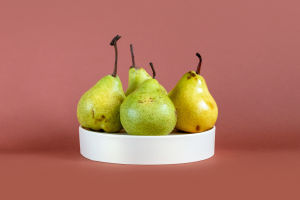To get the most benefit out of a daily skincare regimen, no matter what your skin type, you should start with three simple steps, according to Ashley Magovern, M.D., dermatologist and owner and founder of Manhattan Dermatology in Manhattan Beach, California: Cleanse, Treat, and Moisturize
You probably already know that cleansing means washing your face and moisturizing means hydrating your skin, but what does "treating" involve? Well, in addition to keeping your complexion in tip-top shape, the goal of any good skincare routine is to target problem areas. So, treating means incorporating serums or creams packed full of beneficial skincare ingredients like vitamin C, retinol, alpha hydroxy acids and others, depending on your skin type and the results you want to see, explains Dr Magovern. "Adding a middle step in between the cleansing and moisturizing components is really important," Dr. Magovern says. "It can make a huge difference over time and in the health, appearance and aging of your skin."
Whether you have a three- or nine-step routine, there’s one thing anyone can do to improve their skincare, which is to apply products in the right order. No matter your skin concerns, you’ll want to start with a clean, toned base, then apply concentrated, active ingredients, and finish by sealing in moisture—and, of course, SPF in the daytime. Here are the steps for a good skincare regimen:
1. Wash your face
Morning and night, rinse your face water and rub a small amount of gentle cleanser between clean palms. Massage face wash all over your face using gentle pressure. Rinse your hands and massage your face with water to rinse your face until you’ve removed the cleanser and grime. Gently pat your face dry with a soft towel. If you wear makeup, you may need to cleanse twice at night. First, remove your makeup with cleansing oil or micellar water. Try leaving dedicated eye-makeup removers on for a couple of minutes to allow the makeup to come off more easily and avoid rubbing your eyes. Follow up with a full-face gentle cleanse.
2. Apply toner
For many, the word “toner” brings to mind stinging astringents from the ’80s. “The original was an alcohol-based product that was used to dry up oily skin and remove any leftover dirt following cleansing,” Dr. Nazarian says. Today’s formulas, however, have evolved. Think of them as supplements — these thin liquids deliver an extra shot of nutrients, helping the other products in your regimen absorb better, while still balancing your complexion. Most experts, the New York City aesthetician Jordana Mattioli says, consider toner to be optional: “It can be a good way to add in specific ingredients that you may not have in your other products or add another layer of skin-replenishment.” Toners should be done after cleansing and before putting on anything else. Applying toner with clean hands is the most efficient. Just pour a few drops in your palm, then swipe it on.
3. Apply serum
Simply put, serums are powerful skin allies. Filled with concentrated doses of active ingredients, these elixirs can mitigate a number of issues, from dark spots to wrinkles. “Even if you don’t have any specific issues, everyone still needs a general antioxidant serum in the morning to protect from daily aggressors
4. Apply eye cream
You can apply regular moisturizer to your under-eye area, but if you decide to use a specialized eye cream, you’ll typically want to layer it underneath moisturizer, since eye creams tend to be thinner than face moisturizers. Try using an eye cream with a metal roller-ball applicator and storing it in the fridge to counteract puffiness in the morning. Using a hydrating eye cream at night can cause fluid retention that makes eyes look puffy in the morning.
5. Use spot treatment
It’s a good idea to use acne spot treatments at night, when your body is in repair mode. Be wary of layering acne-fighting ingredients like benzoyl peroxide or salicylic acids with retinol, which can cause irritation. Instead, make sure you’re doing the most to keep skin calm and hydrated.
6. Moisturize
Moisturizer both hydrates skin and locks in all the other layers of product you’ve applied. Look for a lightweight lotion for the morning, ideally with SPF 30 or higher. In the evening, you can use a thicker night cream. Those with dry skin may want to use a cream morning and night.


